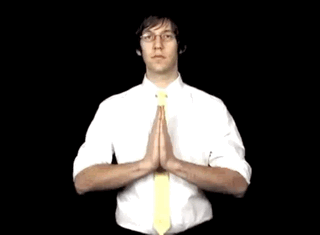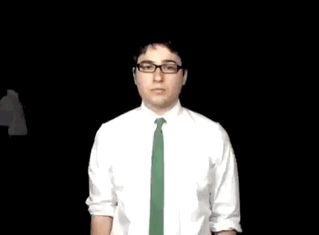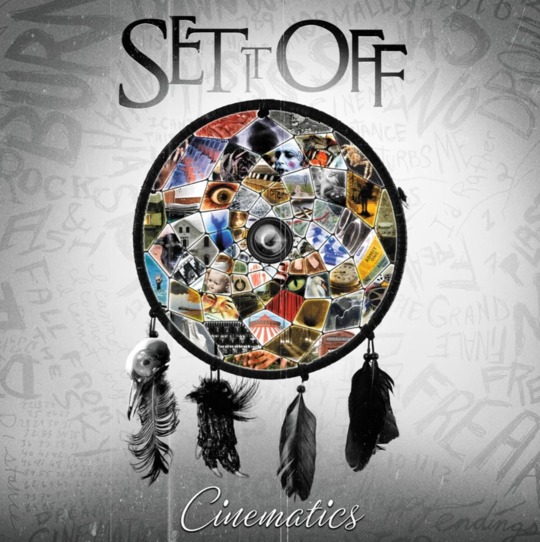#cantor set
Explore tagged Tumblr posts
Text
"Average person discovers infinitely many infinities per year" factoid is actually just a statistical error. The average person discovers 0 infinities per year. Cantor Georg, who introduced the diagonal argument and discovered infinitely many infinities in 1891 alone, is an outlier and cannot be counted.
2K notes
·
View notes
Text

It’s not a want. It’s a NEED
Please go support it man it’s so cool !!! And supporting it’s free !!!
❤️💙💛💚����
#tally hall#rob cantor#joe hawley#zubin sedghi#andrew horowitz#ross federman#bora karaca#tally hall Lego set
19 notes
·
View notes
Text

justin cornwall!!! with the band AND the van !!! :O
#my ideal photo setting w tally hall#tally hall#tally hall van#andrew horowitz#zubin sedghi#ross federman#joe hawley#rob cantor#bora karaca
22 notes
·
View notes
Text
Welcome to the premier of One-Picture-Proof!

This is either going to be the first installment of a long running series or something I will never do again. (We'll see, don't know yet.)
Like the name suggests each iteration will showcase a theorem with its proof, all in one picture. I will provide preliminaries and definitions, as well as some execises so you can test your understanding. (Answers will be provided below the break.)
The goal is to ease people with some basic knowledge in mathematics into set theory, and its categorical approach specifically. While many of the theorems in this series will apply to topos theory in general, our main interest will be the topos Set. I will assume you are aware of the notations of commutative diagrams and some terminology. You will find each post to be very information dense, don't feel discouraged if you need some time on each diagram. When you have internalized everything mentioned in this post you have completed weeks worth of study from a variety of undergrad and grad courses. Try to work through the proof arrow by arrow, try out specific examples and it will become clear in retrospect.
Please feel free to submit your solutions and ask questions, I will try to clear up missunderstandings and it will help me designing further illustrations. (Of course you can just cheat, but where's the fun in that. Noone's here to judge you!)
Preliminaries and Definitions:
B^A is the exponential object, which contains all morphisms A→B. I comes equipped with the morphism eval. : A×(B^A)→B which can be thought of as evaluating an input-morphism pair (a,f)↦f(a).
The natural isomorphism curry sends a morphism X×A→B to the morphism X→B^A that partially evaluates it. (1×A≃A)
φ is just some morphism A→B^A.
Δ is the diagonal, which maps a↦(a,a).
1 is the terminal object, you can think of it as a single-point set.
We will start out with some introductory theorem, which many of you may already be familiar with. Here it is again, so you don't have to scroll all the way up:

Exercises:
What is the statement of the theorem?
Work through the proof, follow the arrows in the diagram, understand how it is composed.
What is the more popular name for this technique?
What are some applications of it? Work through those corollaries in the diagram.
Can the theorem be modified for epimorphisms? Why or why not?
For the advanced: What is the precise requirement on the category, such that we can perform this proof?
For the advanced: Can you alter the proof to lessen this requirement?
Bonus question: Can you see the Sicko face? Can you unsee it now?
Expand to see the solutions:
Solutions:
This is Lawvere's Fixed-Point Theorem. It states that, if there is a point-surjective morphism φ:A→B^A, then every endomorphism on B has a fixed point.
Good job! Nothing else to say here.
This is most commonly known as diagonalization, though many corollaries carry their own name. Usually it is stated in its contraposition: Given a fixed-point-less endomorphism on B there is no surjective morphism A→B^A.
Most famous is certainly Cantor's Diagonalization, which introduced the technique and founded the field of set theory. For this we work in the category of sets where morphisms are functions. Let A=ℕ and B=2={0,1}. Now the function 2→2, 0↦1, 1↦0 witnesses that there can not be a surjection ℕ→2^ℕ, and thus there is more than one infinite cardinal. Similarly it is also the prototypiacal proof of incompletness arguments, such as Gödels Incompleteness Theorem when applied to a Gödel-numbering, the Halting Problem when we enumerate all programs (more generally Rice's Theorem), Russells Paradox, the Liar Paradox and Tarski's Non-Defineability of Truth when we enumerate definable formulas or Curry's Paradox which shows lambda calculus is incompatible with the implication symbol (minimal logic) as well as many many more. As in the proof for Curry's Paradox it can be used to construct a fixed-point combinator. It also is the basis for forcing but this will be discussed in detail at a later date.
If we were to replace point-surjective with epimorphism the theorem would no longer hold for general categories. (Of course in Set the epimorphisms are exactly the surjective functions.) The standard counterexample is somewhat technical and uses an epimorphism ℕ→S^ℕ in the category of compactly generated Hausdorff spaces. This either made it very obvious to you or not at all. Either way, don't linger on this for too long. (Maybe in future installments we will talk about Polish spaces, then you may want to look at this again.) If you really want to you can read more in the nLab page mentioned below.
This proof requires our category to be cartesian closed. This means that it has all finite products and gives us some "meta knowledge", called closed monoidal structure, to work with exponentials.
Yanofsky's theorem is a slight generalization. It combines our proof steps where we use the closed monoidal structure such that we only use finite products by pre-evaluating everything. But this in turn requires us to introduce a corresponding technicallity to the statement of the theorem which makes working with it much more cumbersome. So it is worth keeping in the back of your mind that it exists, but usually you want to be working with Lawvere's version.
Yes you can. No, you will never be able to look at this diagram the same way again.
We see that Lawvere's Theorem forms the foundation of foundational mathematics and logic, appears everywhere and is (imo) its most important theorem. Hence why I thought it a good pick to kick of this series.
If you want to read more, the nLab page expands on some of the only tangentially mentioned topics, but in my opinion this suprisingly beginner friendly paper by Yanofsky is the best way to read about the topic.
#mathblr#mathematics#set theory#diagram#topos theory#diagonalization#topology#incompleteness#logic#nLab#Lawvere#fixed point#theorem#teaching#paradox#halting problem#math#phdblr#Yanofsky#Cantor#Tarski#Gödel#Russell#philosophy#category theory
106 notes
·
View notes
Text

✰JOE HAWLEY✰
‘ ℝ𝕖𝕕, 𝕥𝕙𝕖 𝕡𝕣𝕠𝕦𝕕 𝕝𝕠𝕦𝕕 𝕘𝕦𝕪 𝕨𝕖 𝕒𝕕𝕠𝕣𝕖 ‘
••••••••••••••••••••••••••
• RED TIE !
• RHYTHM GUITARIST !
• VOCALIST !

✰ROB CANTOR✰
‘ ʏᴇʟʟᴏᴡ ᴛɪᴇ, ᴛʜɪꜱ ꜱᴜᴀᴠᴇ ꜰᴇʟʟᴏᴡ ᴡʀɪᴛᴇꜱ ʜᴇᴛᴇʀᴏᴘʜᴏɴɪᴄ ᴛᴜɴᴇꜱ ᴏꜰ ʜᴏᴡ ʟᴏᴠᴇ ʙɪᴛᴇꜱ ‘
••••••••••••••••••••••••••
• YELLOW TIE !
• GUITARIST !
• VOCALIST !
• CO-WRITER !

✰ANDREW HOROWITZ✰
‘ 𝗦𝗲𝗻𝗱 𝗵𝗼𝗺𝗲 𝘁𝗵𝗲 𝗹𝗼𝗰𝗸𝘀𝗺𝗶𝘁𝗵, 𝗚𝗿𝗲𝗲𝗻'𝘀 𝗴𝗼𝘁 𝗸𝗲𝘆𝘀 𝘁𝗼 𝘂𝗻𝗹𝗼𝗰𝗸 𝘁𝗵𝗲 𝗿𝗼𝗰𝗸 𝗶𝗻 𝘁𝗵𝗲 𝗮𝗰𝘁 𝗶𝗳 𝘆𝗼𝘂 𝗽����𝗲𝗮𝘀𝗲 ‘
••••••••••••••••••••••••••
• GREEN TIE !
• KEYBOARDIST !
• SONGWRITER !

✰ZUBIN SEDGHI✰
‘ 𝒩𝑜𝓌 𝑜𝓅𝑒𝓃 𝓉𝒽𝑒 𝒸𝒶𝓈𝑒, 𝑔𝒾𝓋𝑒 𝐵𝓁𝓊𝑒 𝓉𝒽𝑒 𝒷𝒶𝓈𝓈 ‘
••••••••••••••••••••••••••
• BLUE TIE !
• BASSIST !
• VOCALIST !

✰ROSS FEDERMAN✰
‘ 𝚂𝚘 𝙶𝚛𝚎𝚢 𝚒𝚗 𝚝𝚑𝚎 𝚋𝚊𝚌𝚔, 𝚜𝚒𝚙𝚙𝚒𝚗' '𝚐𝚗𝚊𝚌 𝚌𝚊𝚗 𝚑𝚎𝚊𝚛 ‘
••••••••••••••••••••••••••
• GREY TIE !
• DRUMMER !
#this took me so everloving long to create#please love it#please#please please#please appreciate it#i tried :(#okay official tags now#tally hall#tally hall gif set#gifset#gif set#tally hall internet show#t.h.i.s#tally hall’s internet show#joe hawley#rob cantor#andrew horowitz#zubin sedghi#ross federman
69 notes
·
View notes
Text

yep, very me :)
5 notes
·
View notes
Text


Shia Labeof (Rob Cantor)
You’re walking in the woods/There’s no one around and your phone is dead/Out of the corner of your eye you spot him/Shia LaBeouf!
"Like actually. I can’t really explain it but from the first time I heard it I’ve genuinely adored it. Most of that is because how absolutely bizarre the lyrics are, but never discount the drama of watching the production level in the video keep going up. Like that whisper kid, and the dancers. And then Shia actually there? Only one in the audience? The person who came up with this is mind boggling. And to get Shia onboard? This would not happen with probably any one else."
Poll Runner: First heard this onw when I was a kid and had no idea who Shia was... I still don't but it's still such a fun weird song.
Freak Show (Set It Off)
I am circus freak/Cut out my heart, cut out my heart/Loveless and watch me bleed/Tear me apart, tear me apart/I've lost myself in make believe/I dont want to go, I dont want to go, make me/Over and over I've deceived/You want reform? I can conform/Cuz I cant take any more of your tainted bliss
"Its just really personal and I can connect to the lyrics on that first bit I typed since om aromantic. It also jus t has a really noce sound to it"
Poll Runner: It's a song about feeling left out, an outcast, but its so wonderfully angry and resentful and powerful rather than sad. One of my favourite Set it Off songs - it fucks HARD.
22 notes
·
View notes
Text
The Philosophy of Set Theory
The philosophy of set theory explores the foundational aspects of set theory, a branch of mathematical logic that deals with the concept of a "set," which is essentially a collection of distinct objects, considered as an object in its own right. Set theory forms the basis for much of modern mathematics and has significant implications for logic, philosophy, and the foundations of mathematics.
Key Concepts in the Philosophy of Set Theory:
Definition of Set Theory:
Basic Concepts: Set theory studies sets, which are collections of objects, called elements or members. These objects can be anything—numbers, symbols, other sets, etc. A set is usually denoted by curly brackets, such as {a, b, c}, where "a," "b," and "c" are elements of the set.
Types of Sets: Sets can be finite, with a limited number of elements, or infinite. They can also be empty (the empty set, denoted by ∅), or they can contain other sets as elements (e.g., {{a}, {b, c}}).
Philosophical Foundations:
Naive vs. Axiomatic Set Theory:
Naive Set Theory: In its original form, set theory was developed naively, where sets were treated intuitively without strict formalization. However, this led to paradoxes, such as Russell's paradox, where the set of all sets that do not contain themselves both must and must not contain itself.
Axiomatic Set Theory: In response to these paradoxes, mathematicians developed axiomatic set theory, notably the Zermelo-Fraenkel set theory (ZF) and Zermelo-Fraenkel set theory with the Axiom of Choice (ZFC). These formal systems use a set of axioms to avoid paradoxes and provide a rigorous foundation for set theory.
Set Theory and the Foundations of Mathematics:
Role in Mathematics: Set theory serves as the foundational framework for nearly all of modern mathematics. Concepts like numbers, functions, and spaces are all defined in terms of sets, making set theory the language in which most of mathematics is expressed.
Mathematical Platonism: The philosophy of set theory often intersects with debates in mathematical Platonism, which posits that mathematical objects, including sets, exist independently of human thought. Set theory, from this perspective, uncovers truths about a realm of abstract entities.
Philosophical Issues and Paradoxes:
Russell's Paradox: This paradox highlights the problems of naive set theory by considering the set of all sets that do not contain themselves. If such a set exists, it both must and must not contain itself, leading to a contradiction. This paradox motivated the development of axiomatic systems.
Continuum Hypothesis: One of the most famous problems in set theory is the Continuum Hypothesis, which concerns the possible sizes of infinite sets, particularly whether there is a set size between that of the integers and the real numbers. The hypothesis is independent of the ZFC axioms, meaning it can neither be proven nor disproven within this system.
Axioms of Set Theory:
Zermelo-Fraenkel Axioms (ZF): These axioms form the basis of modern set theory, providing a formal foundation that avoids the paradoxes of naive set theory. The axioms include principles like the Axiom of Extensionality (two sets are equal if they have the same elements) and the Axiom of Regularity (no set is a member of itself).
Axiom of Choice (AC): This controversial axiom asserts that for any set of non-empty sets, there exists a function (a choice function) that selects exactly one element from each set. While widely accepted, it has led to some counterintuitive results, like the Banach-Tarski Paradox, which shows that a sphere can be divided and reassembled into two identical spheres.
Infinity in Set Theory:
Finite vs. Infinite Sets: Set theory formally distinguishes between finite and infinite sets. The concept of infinity in set theory is rich and multifaceted, involving various sizes or "cardinalities" of infinite sets.
Cantor’s Theorem: Georg Cantor, the founder of set theory, demonstrated that not all infinities are equal. For example, the set of real numbers (the continuum) has a greater cardinality than the set of natural numbers, even though both are infinite.
Philosophical Debates:
Set-Theoretic Pluralism: Some philosophers advocate for pluralism in set theory, where multiple, possibly conflicting, set theories are considered valid. This contrasts with the traditional view that there is a single, correct set theory.
Constructivism vs. Platonism: In the philosophy of mathematics, constructivists argue that mathematical objects, including sets, only exist insofar as they can be explicitly constructed, while Platonists hold that sets exist independently of our knowledge or constructions.
Applications Beyond Mathematics:
Set Theory in Logic: Set theory is foundational not only to mathematics but also to formal logic, where it provides a framework for understanding and manipulating logical structures.
Philosophy of Language: In philosophy of language, set theory underlies the formal semantics of natural languages, helping to model meaning and reference in precise terms.
The philosophy of set theory is a rich field that explores the foundational principles underlying modern mathematics and logic. It engages with deep philosophical questions about the nature of mathematical objects, the concept of infinity, and the limits of formal systems. Through its rigorous structure, set theory not only provides the bedrock for much of mathematics but also offers insights into the nature of abstraction, existence, and truth in the mathematical realm.
#philosophy#epistemology#knowledge#learning#education#chatgpt#ontology#metaphysics#Set Theory#Mathematical Logic#Axiomatic Systems#Zermelo-Fraenkel Set Theory (ZF)#Axiom of Choice#Russell's Paradox#Continuum Hypothesis#Infinity#Cantor’s Theorem#Mathematical Platonism#Constructivism#Set-Theoretic Pluralism#Philosophy of Mathematics#Naive Set Theory#Formal Semantics
6 notes
·
View notes
Text
SO THE TALLY HALL PLUSHIES ARE REAL?!?!?!
SEPTEMBER 8TH
#im kinda concerned about the joe plushie though#Its the entire band but#I wanna complete the set n all#:(#tally halll yootooz plushies#tallyhall#tally hall#joe hawley#zubin sedghi#andrew horowitz#rob cantor#ross federman
34 notes
·
View notes
Text
Friend: Most sets have more than infinity elements! Me: Actually, most sets have less than infinity elements, it's just that Sets Georg made a few sets with more than infinity elements, and it skews the average
11 notes
·
View notes
Text
making an aaracokra mathematician for my new dnd campaign his name is aarith metic and he was integral in proving the condor metic birdstein theorem
#i know most people just call it the schroeder bernstein theorem#but my set theory professor called it the cantor schroeder bernstein theorem#and something about making georg cantor#a bird guy named condor#absolutely fucking kills me#i hope anyone who follows me knows what im talking about
2 notes
·
View notes
Text
Did you know that when Cantor discovered that some infinities are bigger than other infinities, he wondered what it would mean for God to count? Did you know he was hated not only by logicians and philosophers, but even by theologians, claiming that his ideas of infinity were blasphemous?
did you know they say calculus is the language of God. did you know they tried to hold math up to infinity like a candle to the void. did you know statisticians plunged into the vastness of random chance and picked out patterns and equations and eight hundred ways to tell you how big your inevitable errors are and how far off those guesses at errors might be. math haters I can't sit with you anymore. human innovation is cradled in these ancient, methodical, desperate attempts at understanding what we are not designed to understand
16K notes
·
View notes
Text


0 notes
Text

0 notes
Text
cantor's set is honestly one of the best things in this universe, I love it so much
#cantor's set#mathblr#i have my toc midsem tmr and i have studied no shit and i have no idea how tmr's going to be#also im sick and had lab amd haven't slept well#so will sleep now and lose more time#oh lord save me
2 notes
·
View notes
Note
how rich RICH are Jewish!rafe and Jewish!reader??
what do they do.... NEED THAT
oh babe. they are so rich it’s actually disrespectful.
we’re talking old money meets new money — trust funds on both sides, family homes in the hamptons and palm beach, and enough assets in diamonds and art alone to fund a small country club’s renovation.
here’s the breakdown:
jewish!rafe:
finance king. obviously. his family has money, but he made even more on his own.
hedge fund, private equity, generational wealth kind of vibe. owns part of the firm now. smirks when he reads the forbes 30 under 30 list like it’s amateur hour.
still drives the g-wagon like it’s a civic.
casually wears patek philippe and tom ford suits like they're nothing. his socks cost more than your rent.
has a guy for everything. valet, dry cleaning, vintage watches, impossible-to-reserve dinner spots. you don’t even lift a finger—he’s already handled it.
jewish!reader:
the whole jewish american princess. born and raised in the bubble.
dad’s in real estate or law. mom hosts charity luncheons. went to a private jewish day school that cost as much as college.
got a degree in something like art history or fashion merchandising but didn’t really need to work. rafe would rather die than let you stress.
full-time mom / full-time socialite. shabbat dinner always catered. skincare always medical-grade. if you didn’t spend 3k at bergdorf’s this week, are you even okay?
she doesn’t have a job, but she has obligations. hair appointments. charity brunches. soulcycle with the girls. booking the hamptons chef. calling rafe crying because a teenager scratched her car at erewhon.
their lifestyle:
primary residence: a penthouse on the upper east side. floor-to-ceiling windows. a terrace with a sukkah in the fall. private elevator. doorman knows everything.
summer: hamptons house with a pool, live-in housekeeper, and a weekly challah delivery.
winter break: palm beach. oceanfront. tennis, spa, matching linen sets.
they host a fundraiser every year with a famous cantor singing and real celebs in attendance. rafe hates it but looks hot in a tux, so whatever.
they are, simply put: disgustingly rich, very jewish, very hot, and madly obsessed with each other.
#anons ♡⸝⸝#jewish!rafe x jewish!reader#rafe cameron headcanons#rafe cameron fluff#rafe cameron x yn#rafe cameron x reader#rafe cameron blurb#rafe cameron fanfic#rafe obx#rafe cameron fic#rafe cameron smut#rafe cameron prompt#rafe cameron x you#outerbanks x you#outerbanks smut
311 notes
·
View notes